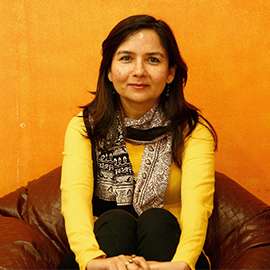A petition to ban beef and one to allow it: the curious contradiction of Change.org

Change can start with a petition. But what happens when we believe that all that's needed for change is a petition?
That seems to be the problem with change.org - a site that, when it launched, immediately gained a loyal following around the world as users felt empowered at being made partners in the process of change.
But dig a little deeper and it turns out the platform is more self-help than agent of social change.
For one, anyone and everyone is welcome on this automated tech platform - much like Facebook, YouTube or Twitter - to speak out, stand up, file a petition.
No matter how bizarre.
In theory, that's great. In practice, you end up with a virtually meaningless roster of petitions, from trivial to contradictory.
There's petitions ranging from "asking the prime minister to punish people who assault doctors like terrorists" to those "demanding that Maya Digital Studio release 'Captain Vyom' on DVD".
But first, the vision
Change.org's India chapter started in June 2011, four years after founder Ben Rattray unleashed his vision of change on the world.
Change, for Rattray, was "to empower people to come together to create the change they want to see".
"We believed that... by giving free tools to people everywhere we could help to distribute power more broadly and empower people to make change in communities around the world."
And it has, undoubtedly, done that. In its seven-year life, change.org has won some major battles and has over 20 million users. And Rattray is happy to see "the beginnings of that vision realised".
But here's the challenge
India seems hungry for change - around 1,400 petitions are filed here every month, 8-9 times higher than the rest of the world.
On the one hand there are the truly empowering ones.
A mother in Karnataka asking the government to issue guidelines to ensure the safety of children in schools.
But then there's one questioning the performance of a private cable TV network.
And, even more intriguingly, contradictory ones.
The site has petitions arguing that the sale of beef be banned in India. There's another propagating the sale of beef.
What happens then?
How Change.org works
"Change.org does not endorse any of the issues. This is similar to Facebook, Twitter or Youtube that offer tools for social networking and allow people to decide upon and drive the content they share on the platforms," says Preethi Herman, the site's India head.
Petitioners have only to make sure they do not bully, use hate speech, threaten or incite violence.
She doesn't see contradictory petitions as a problem, either.
"The opposing views on the beef ban are a classic example of how change.org is being used to enable a powerful debate on a divisive issue," she says. "Two petitions - one supporting and one opposing the beef ban, both with reasonable and rational arguments, are gathering almost equal support on the platform."
In principle, that's true.
It does, however, mean the site is little more than an opinion poll, with feel-good potential attached: sign a petition, feel like you've done your bit, and settle back in the conviction that change is on its way.
Rather than being an impetus of change, what change.org does seem to be emphasising is that it is another automated platform to run campaigns one cares about.
Change is a four letter word spelled 'tech'
Herman says the platform provides "the right technology" for users to take the petition to the next level.
There's no doubt it's effortless - and therefore effective. The automated guidance to create your own campaign makes it easy to start a petition.
But the organisation doesn't intervene in any way. "We do not screen or delete petitions. Like Facebook or Youtube, Change.org has a 'flag as inappropriate' option but no petition is taken down until it is found to be in violation of change.org's community guidelines."
What they do screen petitions for:
- Does the petition have a strong theory of change? Meaning, does it have a strategic, winnable ask?
- Does the petition target a decision maker with the power to make the change requested?
- Does the petition feature a strong personal story that will resonate with a substantial portion of our users?
There's no denying the platform offers opportunity for people to push for change.
In the past, change.org petitions have resulted in onground change, from autorickshaw fares being revised, to a lake being cleaned, drinking water provided in a village to larger scale impacts such as child safety guidelines issued, and laws being drafted.
Except of the site's own admission, that's not really their doing - because their intervention on all petitions is exactly the same.
Does that mean the site's ambition is limited to being a tech delivery platform? A platform where the meaningless sits alongside the life-changing with no scaling in priority or urgency?
Here's what India wants changed
Just a few of the petitions we found on the site during our research:
- Petitioner wants Institute of Chartered Accountants of India to conduct exams on computers, not paper.
- Petitioner wants the Prime Minister of India to punish people who assault doctors like terrorists.
- Petitioner wants Maya Digital Studio to release "Captain Vyom" on DVD or internet.
- Petitioner wants "Gunda" to win an Oscar.
- Petitioner wants ComicCon to organise Supernatural Convention in India.
- Petitioner wants to know why India's biggest DTH provider Tata Sky is unable to provide a 'frustration-free experience'?
Sanitising change
Change.org says it doesn't push one cause any more than another.
But that's at the crux of the problem.
This is a site with serious potential to change lives. They have intent, ability and resources. They have staff with impeccable credentials - including those who've worked with Amnesty and other globally-respected human rights organisations.
And yet, they're making no distinction between vital issues of development and governance and those that come from the personal dissatisfaction of individual users.
"We do not endorse petitions because we are an open platform. Change.org's mission is to empower people everywhere to create the change they want to see in the world," says Herman.
Except real change is messy. It involves taking a stand. It involves throwing your lot in with something and seeing it through to a legitimate conclusion.
Technology can aid change. But human beings - messy, opinionated, passionate, involved and subjective rather than objective - drive it.
A company that's so ambitiously named could do more to live up to it.







![BJP's Kapil Mishra recreates Shankar Mahadevan’s ‘Breathless’ song to highlight Delhi pollution [WATCH] BJP's Kapil Mishra recreates Shankar Mahadevan’s ‘Breathless’ song to highlight Delhi pollution [WATCH]](https://images.catchnews.com/upload/2022/11/03/kapil-mishra_240884_300x172.png)

![Anupam Kher shares pictures of his toned body on 67th birthday [MUST SEE] Anupam Kher shares pictures of his toned body on 67th birthday [MUST SEE]](https://images.catchnews.com/upload/2022/03/07/Anupam_kher_231145_300x172.jpg)






